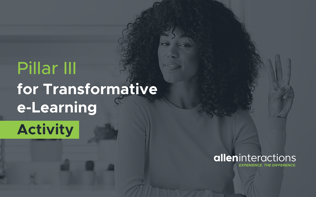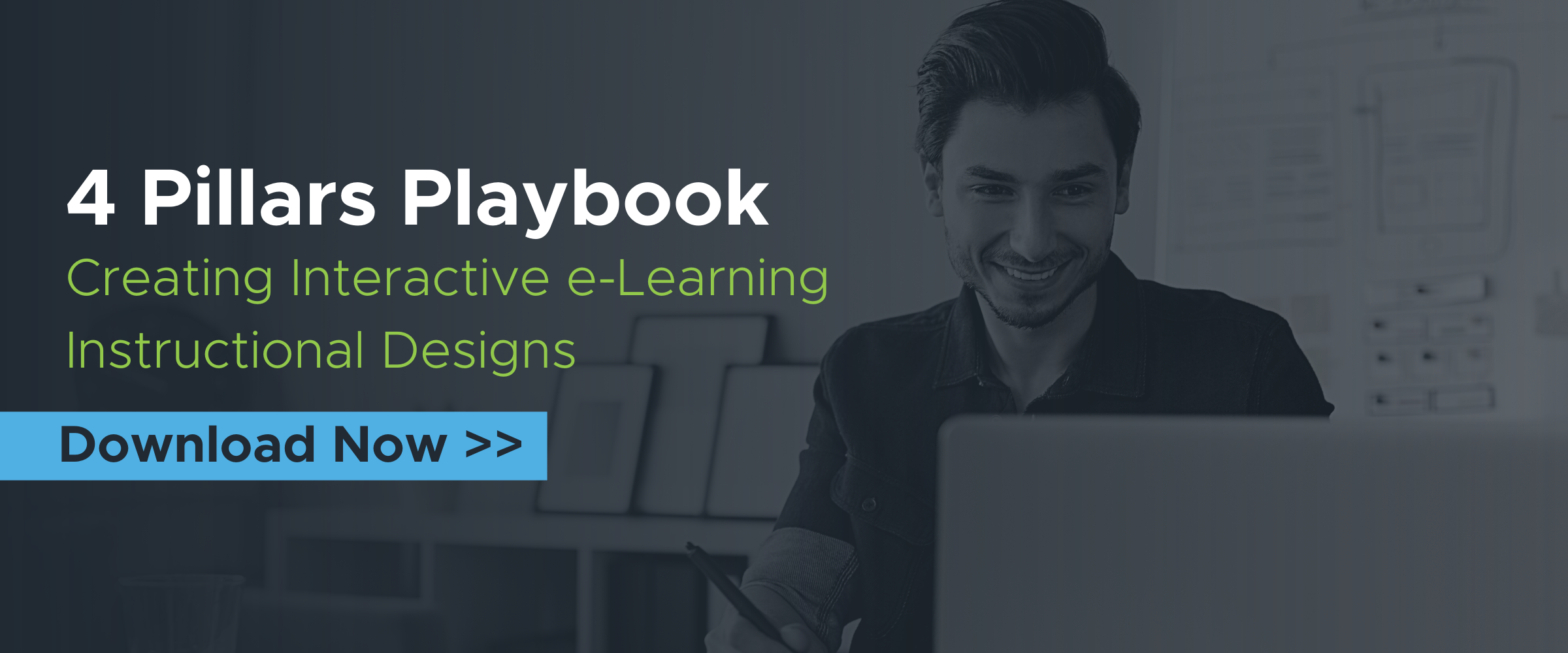Blog
Pillar III for Transformative e-Learning Instructional Design: Activity
Pillar I Blog: Context Pillar II Blog: Challenge Pillar III Blog: Activity


Pillar IV for Transformative e-Learning Instructional Design: Feedback
By Ethan Edwards | March 15, 2021 | Custom Learning | 0 Comments
Pillar I Blog: Context
Pillar II Blog: Challenge
Pillar III Blog: Activity
We’ve been exploring the 4 pillars of e-learning instructional interactivity with CCAF Design in a series of short webinars, and we are ready for what is arguably the most important component: Feedback. We have seen how Context communicates relevance and activates prior knowledge, Challenge elevates learner motivation, and Activity directly engages the learner through potent gestures. It is in the Feedback where teaching and learning meet.
Too often, feedback is tossed off with little thought, little more than a useless “No, try again” message which is almost worse than useless in any benefit it offers the learner. Instead, the feedback should be the “payoff.” You might even say that the whole point of an e-learning interaction is as an effective vehicle to connect the learner meaningfully with the messages contained in the Feedback. But how do you create effective Feedback?
Here are the top 5 strategies I use to design really effective and impactful instructional feedback:
5 strategies to design effective and impactful instructional Feedback
1. present Feedback in Context
Feedback must be completely integrated into the Context. In fact, in thinking of options for your Context, the principal consideration in evaluating the most effective Context among alternatives is the extent to which it facilitates the impactful delivery of feedback. What is the point of creating a vivid immersive visual Context if you abandon the illusion of relevance at the exact moment of critical importance?
2. load Feedback with content
One of the biggest obstacles to meaningful content delivery is motivating learners to read content for meaning. Too often, reading is simply skimmed or entirely skipped. This is especially true when the learner has no specific purpose in reading. But the moment of most heightened interest in the learner is after accepting and acting on a meaningful Challenge—that’s when you have the learner’s attention to deliver a meaningful content message.
3. provide lots of immediate Feedback, but delay judgment
Feedback is a reflection back to the learner of the impact and effectiveness of the learner’s activity. Good feedback doesn’t need to deliver the answer, but it must provide rich information and cues that encourage the critical thinking that leads to active learning. Feedback should be rich and immediate. Judgment, on the other hand, is a concluding assessment of the learner’s performance. Judgment tends to close an interaction and transfer the learner’s interest to what comes next.
4. provide intrinsic Feedback
Intrinsic Feedback is the practice of communicating outcomes―not through independent messaging―but rather through indicators embedded in the actual contextual learning environment. Intrinsic Feedback takes the ideas that drive simulations and heightens the degree to which successes and failures are clearly communicated. Good intrinsic Feedback supports transfer of new behaviors from the learning environment to the performance environment.
5. communicate through consequences
Correctness is not necessarily a particularly potent or even interesting indicator of success. As learners we care much more—particularly if we have been appropriately engaged through a compelling challenge—about the actual consequences of our choices. Representative real-life rewards or painful results create meaningful and emotional memories to reinforce learning.
We’ll explore these ideas and illustrate with an example in this 30-minute, on-demand webinar. Try these strategies for the next e-learning interactions you design. I think you’ll be surprised how even a little creative focus on this often-overlooked element of interactivity can radically transform the impact of your work.
Read More
Pillar I Blog: Context
Pillar II Blog: Challenge
Pillar III Blog: Activity
Download your exclusive copy of the 4 Pillars Playbook to create interactive e-learning instructional designs!

About the Author: Ethan Edwards
Ethan Edwards draws from more than 30 years of industry experience as an elearning instructional designer and developer. He is responsible for the delivery of the internal and external training and communications that reflect Allen Interactions’ unique perspective on creating Meaningful, Memorable, and Motivational learning solutions backed by the best instructional design and latest technologies.
Comments
Would you like to leave a comment?
Related Blog Posts

By: Ethan Edwards | Mar, 2021
Category: Custom Learning
.png?width=316&name=Services%20-%204%20lenses%20updates%20(1).png)
Blog
4 Lenses To Bring E-Learning Instructional Design Into Focus: Part 4 - ...
Pillar I Blog: Context Pillar II Blog: Challenge Pillar III Blog: Activity
By: Ethan Edwards | Aug, 2022
Category: Custom Learning

Blog
Pillar II for Transformative e-Learning Instructional Design: Challenge
Pillar I Blog: Context Pillar II Blog: Challenge Pillar III Blog: Activity
By: Ethan Edwards | Feb, 2021
Category: Custom Learning

